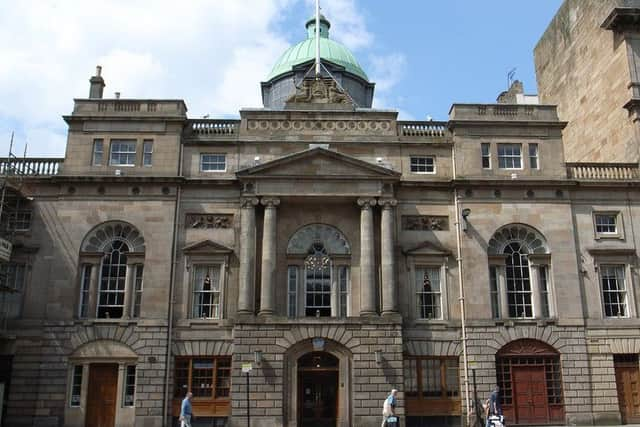Nine traditional Scottish drinks from through the ages


The late Orkney folkorist F. Marian McNeill wrote extensively about Scotland’s drinks tradition in her excellent 1956 book The Scots Cellar.
Here we look at some of the most popular drinks of their days - and raise a glass to the brews which have kept thrapples dowsed over hundreds of years.
Heather Ale


Advertisement
Hide AdAdvertisement
Hide AdLegend has it that the true Pictish recipe for Heather Ale was lost when the last holder of the recipe, Trost of the Long Knife, jumped off a cliff rather to reveal its secret mix to Galloway invaders.
Despite the legend, heather ale continued to be made in Scotland with records from Islay, dated to the late 1700s, detailing how it was made “from the tops of young heath, mixed with a third part of malt and a few hops.”
Heather was also made in Rannoch as late as 1840 with heather tops steeped, boiled and fermented. In Galloway, it was brewed locally in pear-shaped kilns and had a “strong narcotic quality”.
Heather was used as a flavour rather than the basis of alcohol, with malt usually always added, McNeill wrote.


Alloa-based brewery Williams Brother have produced Fraoch, a heather ale, since 1988 and is believed to be the only company in the world to produce such a brew.
Atholl Brose
This mix of whisky, oatmeal and honey is said to date from at least 1475 but, in reality, could be centuries older.


The fine trilogy of ingredients is said to have been used to trap Iain MacDonald, the Lord of the Isles, by placing it in one of his favoured hillside wells. With the water source suddenly bearing a mysterious nectar, it wasn’t long before the Earl of Atholl was able to locate and capture the powerful ruler.
Advertisement
Hide AdAdvertisement
Hide AdAround 80 years ago, the then Duke of Atholl revealed the family recipe around 80 years ago.
Four dessert spoons of runny honey are mixed with four sherry glasses filled with water in which oatmeal has been steeped. Stir together and put into a quarter bottle. Fill it with whisky and shake. Later recipes include an egg yolk or double cream.
It has sometimes been called the “giant’s drink” and was ceremoniously served to the Argyll and Sutherland Highlanders on Hogmanay.


WHIPKULL
This has been described as the “crowning glory” of the great Yule breakfast served in the home of Shetland Udallers or lairds. According to tradition, it was also the favourite drink of the dwellers of Valhalla.
One recipe uses the yolks of a dozen eggs which are whisked for half-an-hour with a pound of caster sugar. Half a pint of rum is added and a quarter pint of fresh cream. It was always served with a square of shortbread.
HIPPOCRAS
This was another festive drink and had its origins in the Middle Ages. A wine sweetened with honey, herbs and spices, it was filtered through a woollen bag known as the Hippocrates sleeve.


Much like a mulled wine, records show it was drunk in 16th Century Edinburgh, by then known as Ypocras and described as a spiced claret. It was usually served with gingerbread.
MEAL-AND-ALE
Advertisement
Hide AdAdvertisement
Hide AdAlso known as Ale-Crowdie, this is traditionally associated with the feast of Harvest Home with the brew particularly popular in Aberdeenshire, McNeill wrote.
It was made with the first of the grain to be returned from the mill, to commemorate the renewal of the food supply.
Around a handful of meal was used for each person, with it placed in a bowl and home-made ale poured over the top.
Consistency was everything. If it was too thin, next year’s crops were feared to be weak.
The mix was sweetened with treacle and generous amounts of whisky before it was left to mellow for the arrival of guest in the evening.
Sometimes charms, including the wedding ring of the woman of the house, would be stirred into the brew as a lucky token.
AULD MAN’S MILK
This is described as a morning drink and reputed to be a “wonderful pick me up,” according to The Scots Cellar.
Advertisement
Hide AdAdvertisement
Hide AdBeaten egg yolks would be mixed with sugar, milk or cream and to this would be added large amounts of whisky, rum or brandy. Whisked egg white would then be slipped in the mix with nutmeg or lemon zest added to taste.
GLASGOW PUNCH
Rum grew in popularity in Glasgow as the city expanded trade with the West Indies in the 19th Century.
At the Pig Club, made up of the city’s “sugar aristocracy”, rum punch became the universal drink of choice with great effort not only put into the mixing of the drink but also the preparation of limes, which would usually have limes run round the inside.
An 1819 recipe of Glasgow Rum Punch as one tablespoon of sugar, one lemon, one wineglass of rum and three-quarters a tumbler of water, per person.
Sometimes icing sugar would be used.
At the Pig Club, great ceremony was attached to the serving of the punch, with a taster to signal if the concoction could be served.
BLUE BLAZER
A form of toddy, the Blue Blazer combines equal parts whisky and boiling water, with one teaspoonful of sugar added along with a twist of lemon peel.
It is essential not to swig the drink, but to sip it with “slow and loving care.”
HIGHLAND CORDIAL
Advertisement
Hide AdAdvertisement
Hide AdA pint of white currants is required. Mix the fruit with lemon rind and essence of ginger in to a wide-mouthed bottle or jar and pour over one bottle of whisky. Make it air tight and leave for 48 hours. Strain and add one pound of caster sugar. Bottle and cork. The cordial will be ready to drink in three months time.